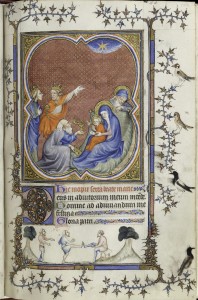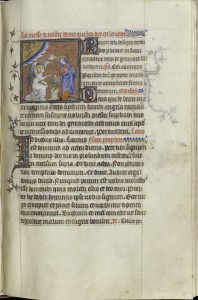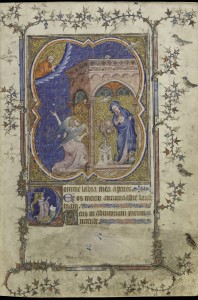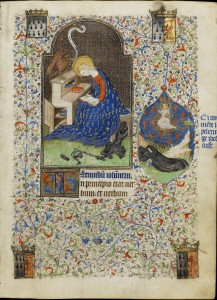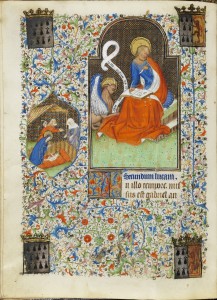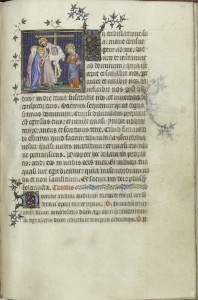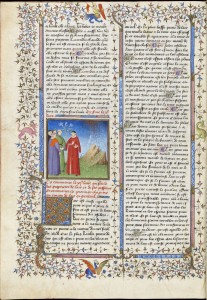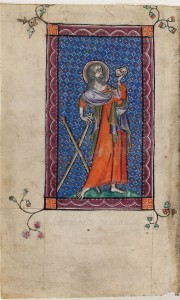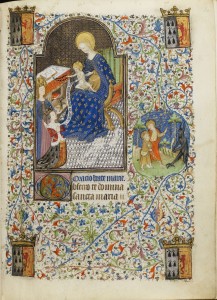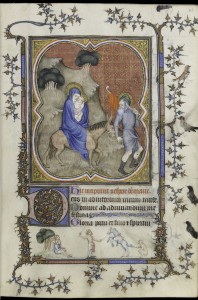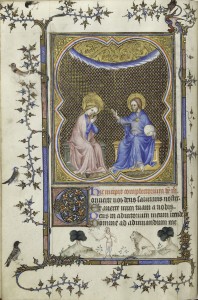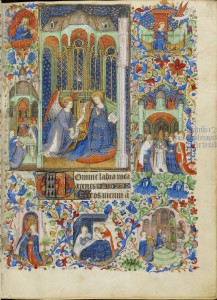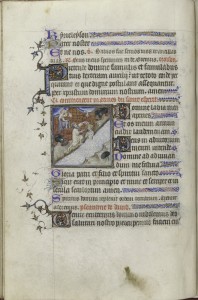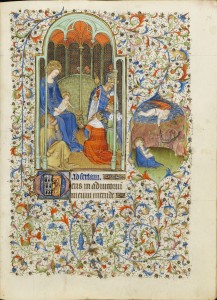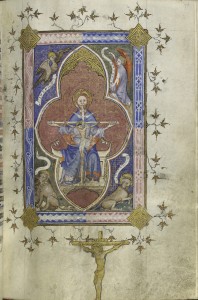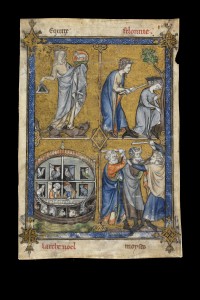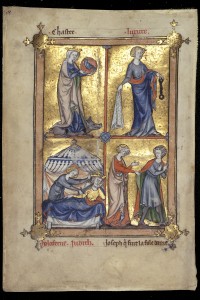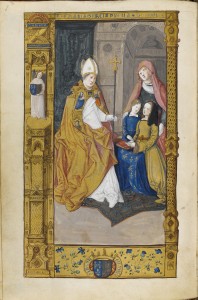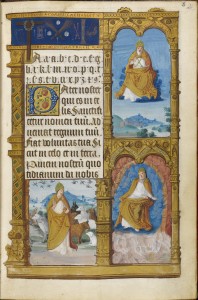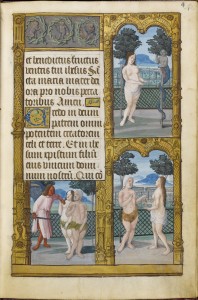Drawings lie beneath the painted surfaces of most medieval miniatures, initials, borders and bas-de-page scenes. Known as underdrawings, these preparatory works range from rapidly executed sketches to highly finished compositions showing every detail of the designs, including facial features and complex drapery folds. Easily observed in unfinished manuscripts, underdrawings in fully painted works are revealed in digital images obtained by near-infrared imaging and infrared reflectography (see LAB; Analytical Methods).
Illuminators usually drew their preliminary designs with a hard metal point (lead or silver) or, occasionally, with charcoal. These light sketches were often reworked in ink that had been diluted so that it could be more easily concealed beneath the pigments. After the ink was applied, the preliminary sketch was sometimes erased to avoid particles of metal or carbon showing through the paint layers. The practice of making underdrawings was central to the collaborative process of illuminating manuscripts. A drawing by a master could be coloured by workshop assistants. Alternatively, a single illuminator could draw and paint an entire picture cycle. Differences in underdrawings offer insights into the division of labour between artists and their respective working methods. A few artists painted freehand without a drawing to guide them.
